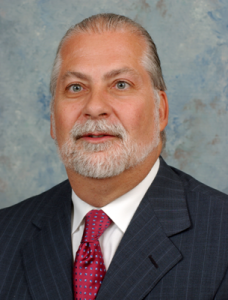5/28/14

By Paul L. Jones, Founder,
Director, Financial Advisory Services for Emerald Skyline Corporation
What is the purpose of life? Why are we alive?
These are questions I have asked myself off and on for all of my life – but especially in times of change….of transformation. Do you ever take a minute to ask yourself these questions? Are you living life to the fullest – and not in a hedonistic way?
We all get consumed by the world, with tending to the details at hand, with solving the problems that arise and with the people who mean the most to us. But what are we doing to fulfill our destiny here on earth. We are only given a short time – no more than 120 years and most between 60 and 80 years. It passes so quickly. So what will be our legacy?
Our top priority is to provide for our families. And, this is true. But providing for our family is more than putting a roof over the head and food in the stomach. More than providing a loving environment…even though these are great accomplishments in and of themselves, we also want to provide a better life for the next generation than we have experienced in ours.
We accomplish this by ensuring our families have what they need to survive and prosper – a good, moral code of ethics, a strong belief system, a quality education and as many opportunities as we can provide.
However, what if all of your efforts were for nothing, naught – because you and the rest of humanity failed to steward the resources that were at your disposal such that the life we seek on this planet is sustainable.
Yes, imagine a world where, because the prior generations were gluttonous in their need for comfort, lazy in their search for more efficient ways to provide modern amenities and greedy in their lust for profits that they squandered the rich bounty of resources that Mother Earth provides. This may not be the world we leave for our children but it could be for our children’s children’s children.
We do this by choosing to ignore the reality that all of our natural resources are limited. Yet, until we are able to populate space stations and other planets, these resources are to last until the end of time.
If we do not take to heart the teachings of all major religions and the cry of the scientists regarding climate change, we risk becoming known as the generation who failed to leave the world better off for having lived….we will have failed.
So, it is our responsibility to learn, think and act in a way that promotes the sustainability of our lives, of our businesses, of our planet….
For most, it is following the principles of reduce, reuse and recycle. Families will increasingly be able to use solar energy, buy local food at a farmer’s market, monitor their use of energy, recycle their plastic, glass and metals, and employ other ways to steward the resources at their disposal – which will simultaneously enable them to reduce their overhead leaving more funds for better things than leaving the air conditioning on high when no one is home.
For those of us in real estate, we have a greater opportunity – and responsibility -since commercial real estate accounts for almost 20% of the nation’s annual greenhouse gas emissions (Energy Star) and “the built environment accounts for 39% of total energy use in the US and 38% of total indirect CO2 emissions.” (From Energy efficiency and real estate: Opportunities for investors” commissioned from Mercer Family Fund by Ceres).
Consequently, owners, investors, developers, managers and advisors in real estate – commercial, residential, industrial, hospitality and institutional, have a significant opportunity to provide for their children and all life on this planet – simply by becoming good stewards of the real estate for which we are responsible or have the ability to improve.
Believe it or not, “a 10% decrease in energy use could lead to a 1.5% increase in net operating income (NOI) with even more impressive figures as the energy savings grow” (Energy Star). One of my mentors, Jim Klingeil, taught me over 30 years ago that a dollar saved is ten dollars earned (based on a 10% cap rate). The savings are better now – at today’s cap rates….
The benefits extend beyond the savings in utility costs, they influence tenant desirability and retention, employee morale and our good will in the community. So, becoming a good steward by making your real estate or your business or your home sustainable is now good business – and good for the soul.
Watch in the coming weeks for our Blog, Sustainable Benefits, with food for thought, practical ideas and news you can use….
Seek to make a difference! Be well and be blessed, Paul
